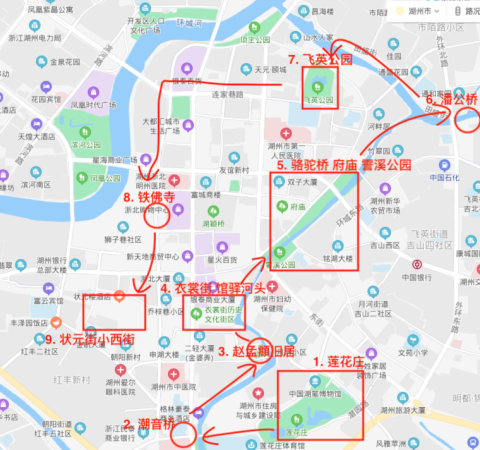
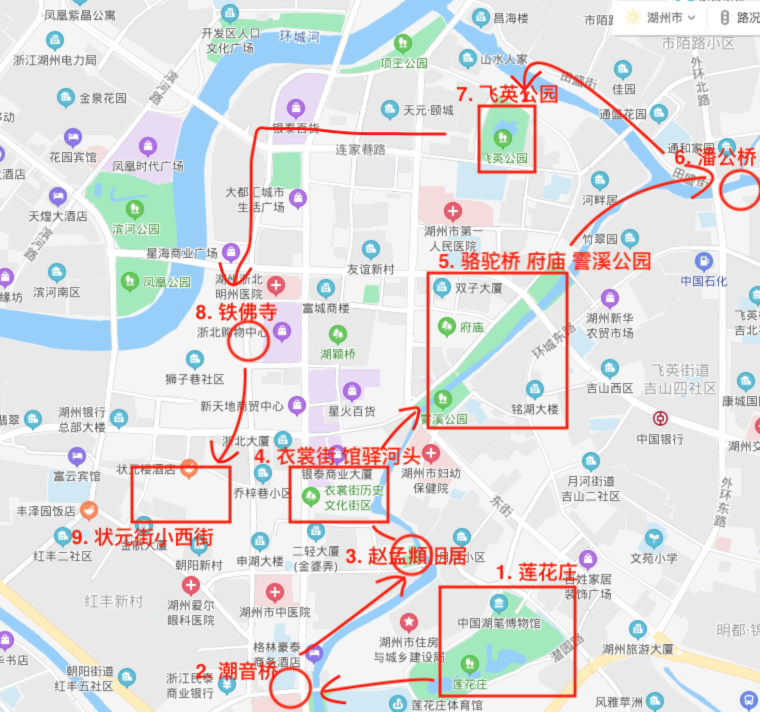
Rampage route

Pan Gongqiao
Huzhou Pan Gong Bridge: a national key cultural relic protection unit. It was built by Pan Jixun (1521-1595), the Minister of the Ming Dynasty, at the confluence of the two Tiaoxi streams in the north gate of Huzhou, hence the name "Pangong Bridge".
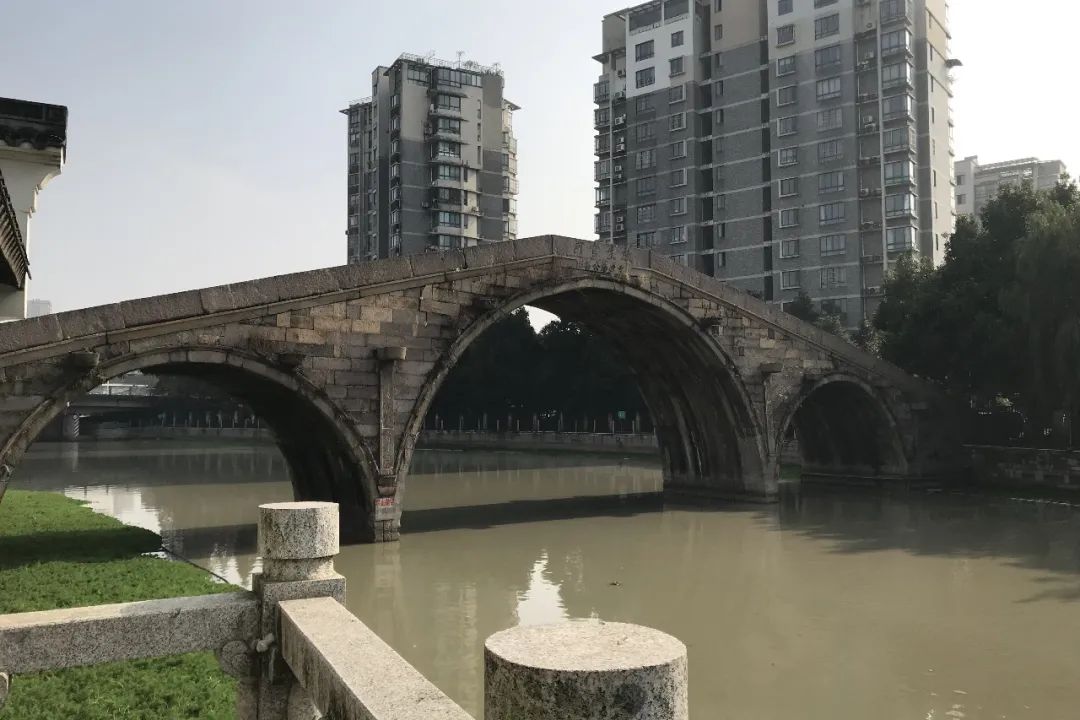
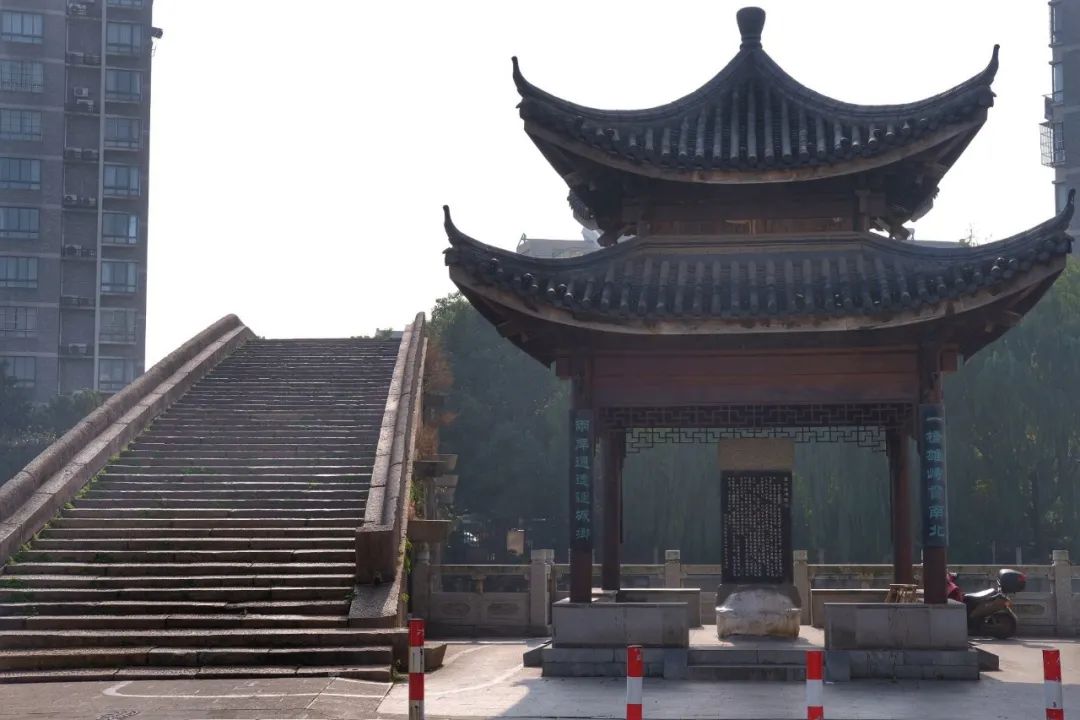
The intersection of Feixi River and Longxi River is the real Pangong Bridge
The opposite side is completely occupied by residential areas, and there is only one bridge from Tian Sheng Street on the north bank.
The pavilion and the stele are newly built, and the base of the stele is an old object.
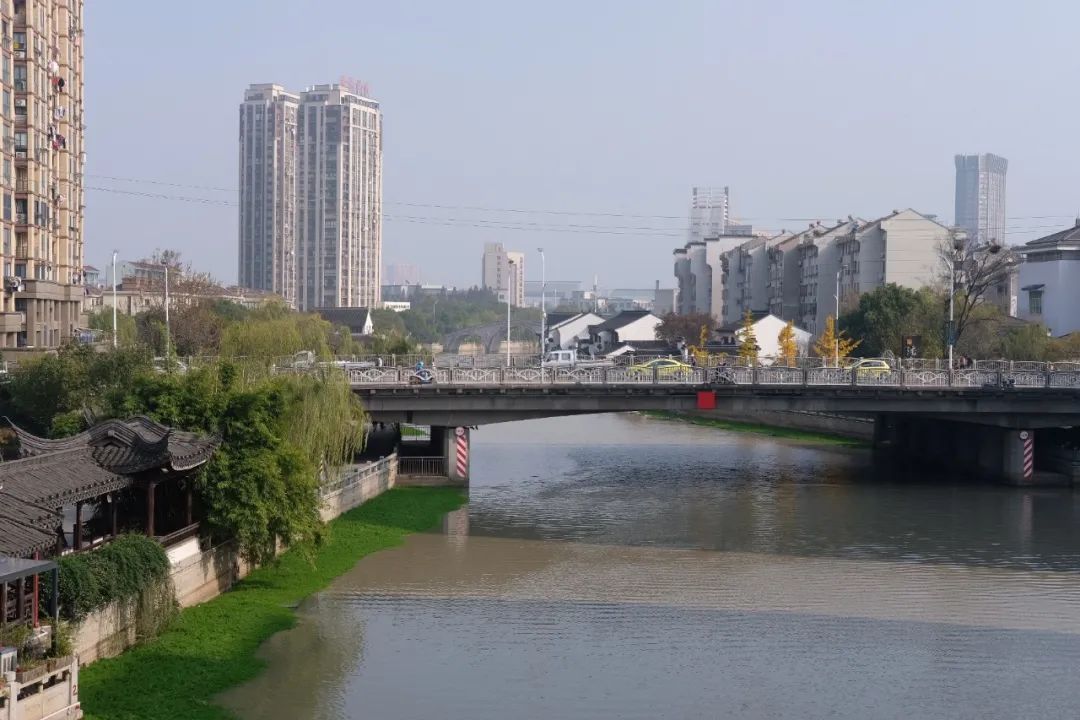
Standing on Pangong Bridge and looking at the North Outer Ring Road Bridge
and another three-hole bridge further away
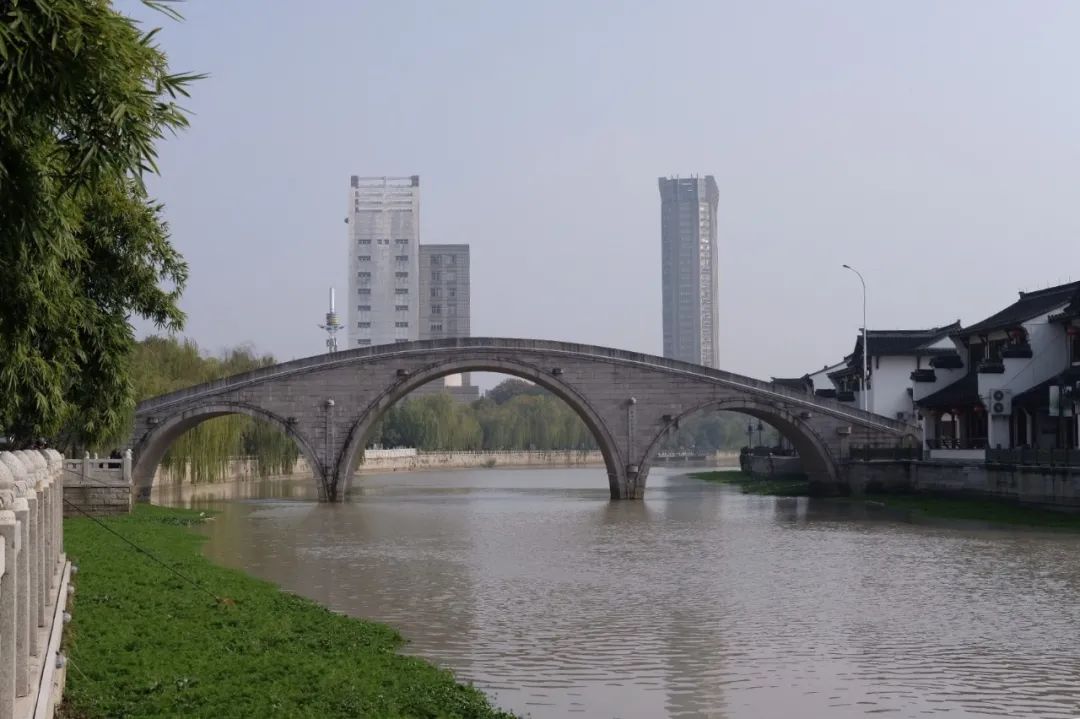
Since I’m riding a bike anyway, I might as well ride over there and take a look at the bridge.
When we arrived under the bridge, there was no introduction. It was probably a new bridge.
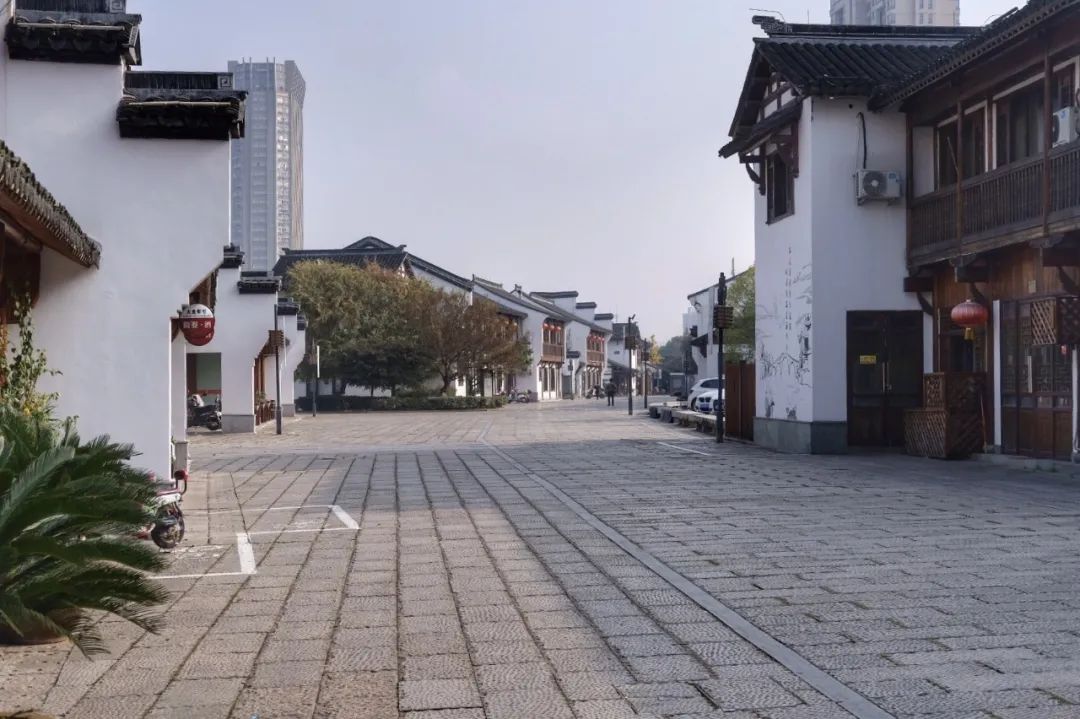
Many pavilions and pavilions were built on both sides of Longxi Port
Crossing the bridge, wow, there is such a big "historic district", called "Panjialang"
But all the shops are closed, it’s a bit eerie in broad daylight
Fortunately, my BMW is still there, so I quickly return the same way.

Feiying Park
Ride west along Tiansheng Street to the opposite side of Feiying Park, tie up your horse, cross a covered bridge to the other side, and see the "Tower in a Tower" Feiying Tower.
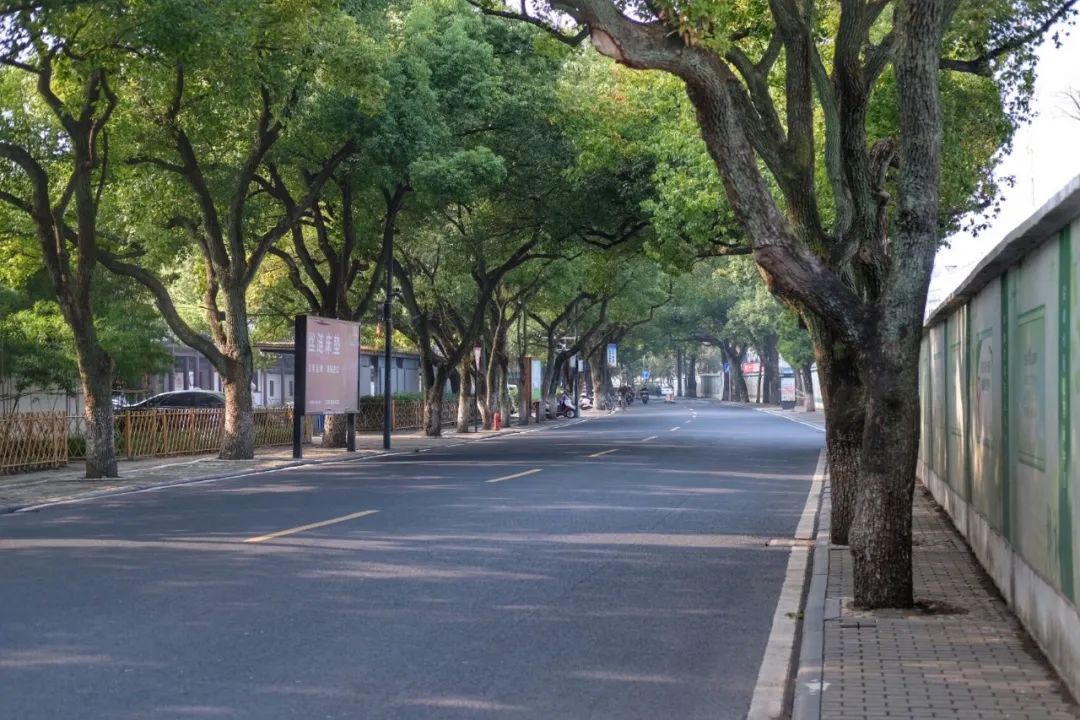
Camphor Avenue leading to the north gate of Feiying Park

Feiyingtang has no history, but the architectural style imitating the Song Dynasty is eye-catching.
Huzhou people drink tea inside, and the ginkgo trees on both sides are very beautiful

Opposite Feiying Hall is Feiying Tower
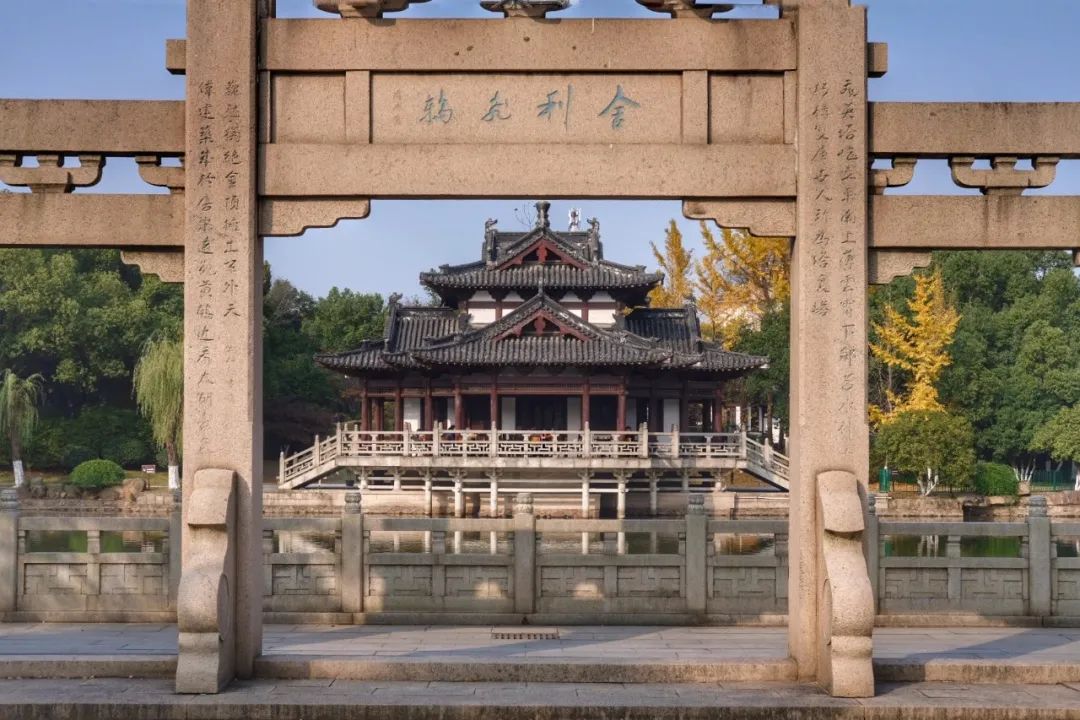
On the roadside leading to Feiying Tower, four stone pillars left from the Ming Dynasty
(The shape is a bit inappropriate for children, please make up your own mind if you are guilty)
You have to buy a 20 yuan ticket to go up to Feiying Tower, so you must go in! If you only have half a day in Huzhou city, be sure to go to Feiying Tower, a national cultural protection unit.
It was built in the fourth year of Tang Zhonghe (AD 884); the pagoda is usually dedicated to treasures. At that time, an eminent monk traveled to Chang'an and claimed that he had received seven relics from the Sangha Master and a statue of Asoka feeding a tiger. It was built in the first year of Tang Qianning (894 AD).
During the Kaibao period of the Northern Song Dynasty (AD 968-976), "some monks claimed to have seen the 'divine light' on the top of the Feiying Pagoda, which was considered to be the appearance of the Buddha and a sign of peace for the people and stability of the country. Therefore, the Song Dynasty issued a special edict, A wooden tower was built on the outer layer of the stone tower, eventually forming the special structure of today's 'Tali Tower'."
After being burned by lightning in the 20th year of Shaoxing in the Southern Song Dynasty (1150 AD), the stone pagoda was rebuilt. It has been repaired in all dynasties since then. The last clearly recorded major repair project was in the 18th year of Daoguang in the Qing Dynasty.
In 1929, due to disrepair, the top of the outer tower suddenly collapsed, causing serious damage to both the inner and outer towers. During the wg period, the inner tower carvings were damaged again. The restoration project started in 1982 and was completed in 1986.
The legendary Feiying Pagoda has thirty floors and is sixty-five feet high (about 200 meters). Today it is 55 meters high, with seven floors and eight sides, a distinctive Song Dynasty architectural style. The inside is about ten square meters in size, and there is only a small space between the wooden pagoda and the stone pagoda. It only allowed two people to stand and raise their heads, it was very shocking!

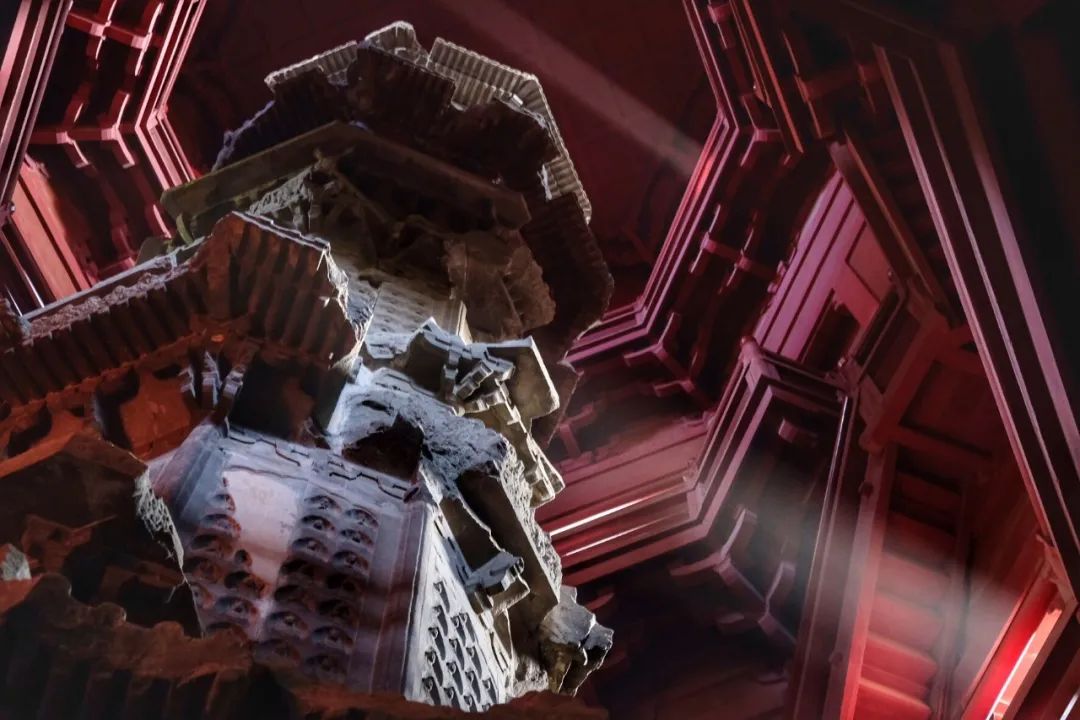
The sunlight at three o'clock in the afternoon slants in through the window
Interlacing light and dark on the stone tower
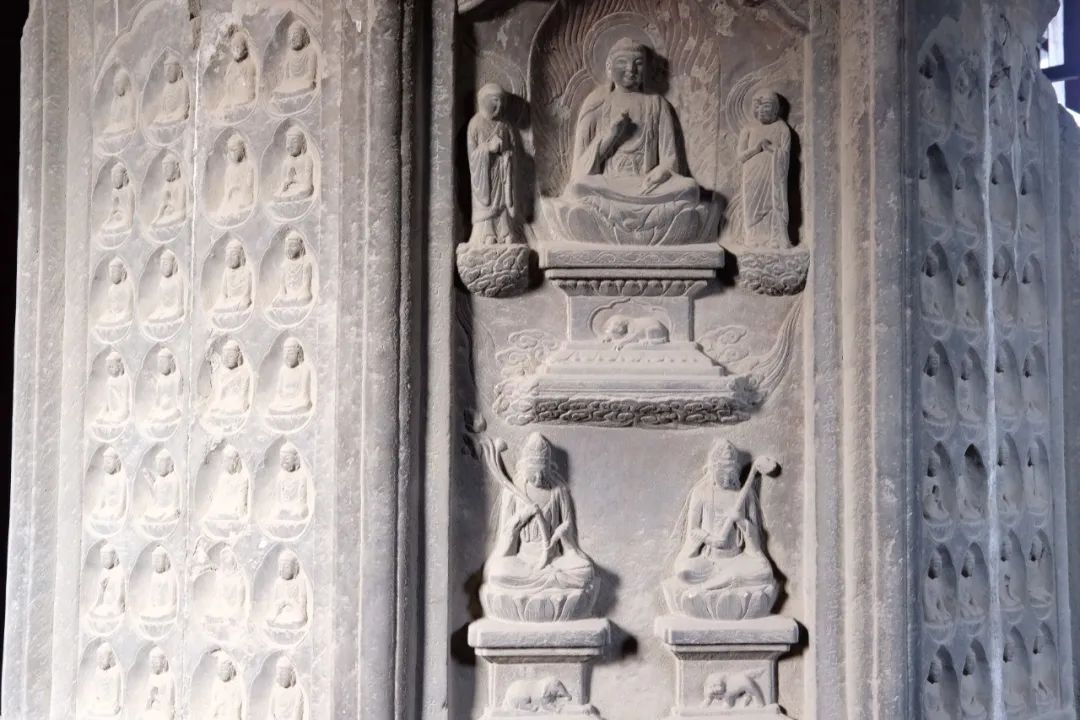
There are wooden planks on each floor for easy viewing of the stone tower up close.
There is also a QR code on the railing, so you can scan it and listen to the explanation.
When we reached about the fourth floor, we found that the stairs leading up were blocked.
It turns out that you have to go out from the corridor outside the tower and go around in a circle to get there.

Sangha Master Statue
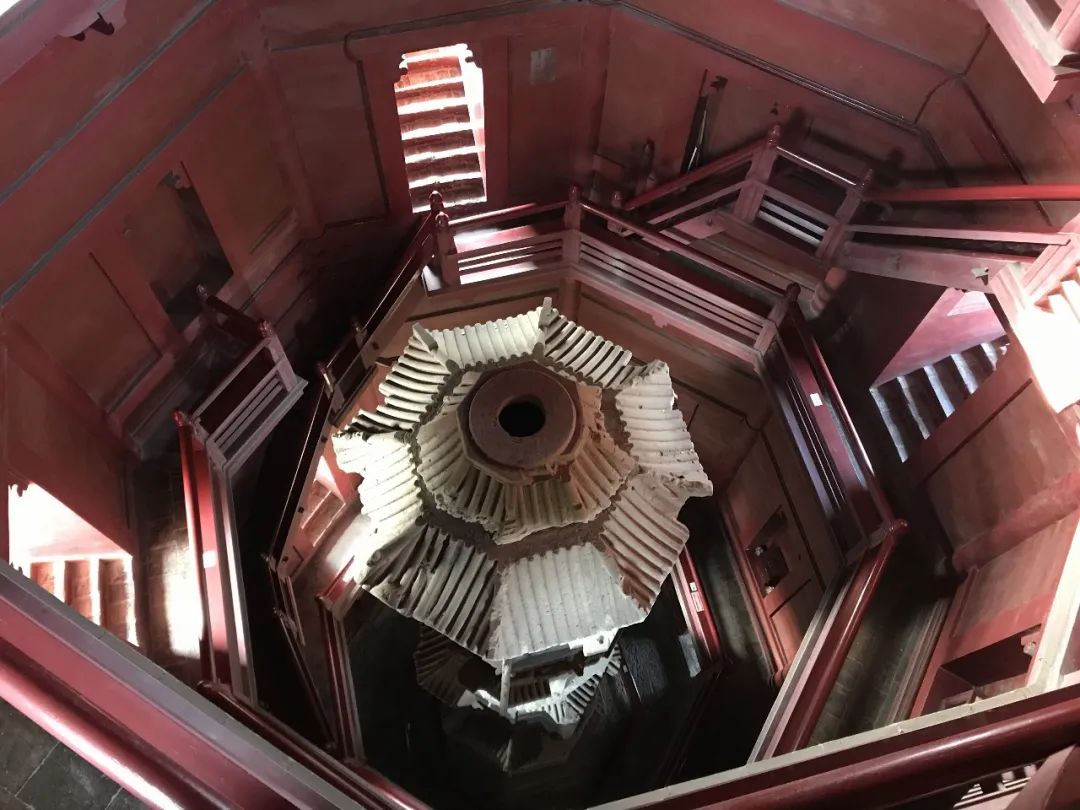
We've reached the top. Looking down, it's really high.
On top of the stone pagoda, the wooden pagoda still has three floors to go before reaching the top.
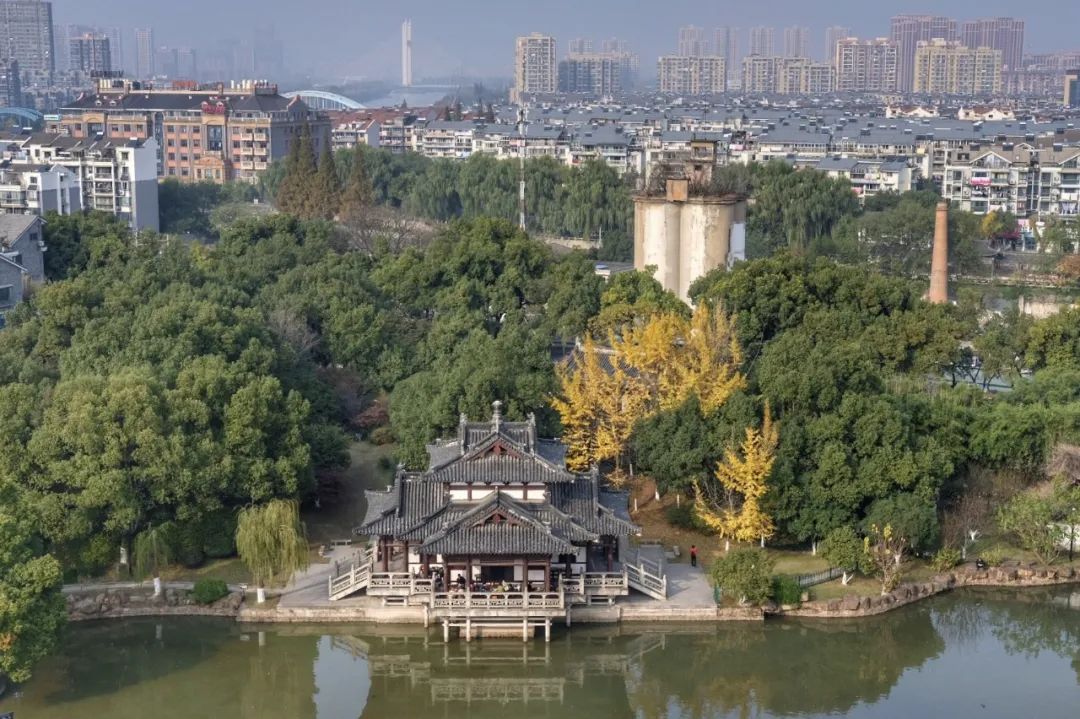
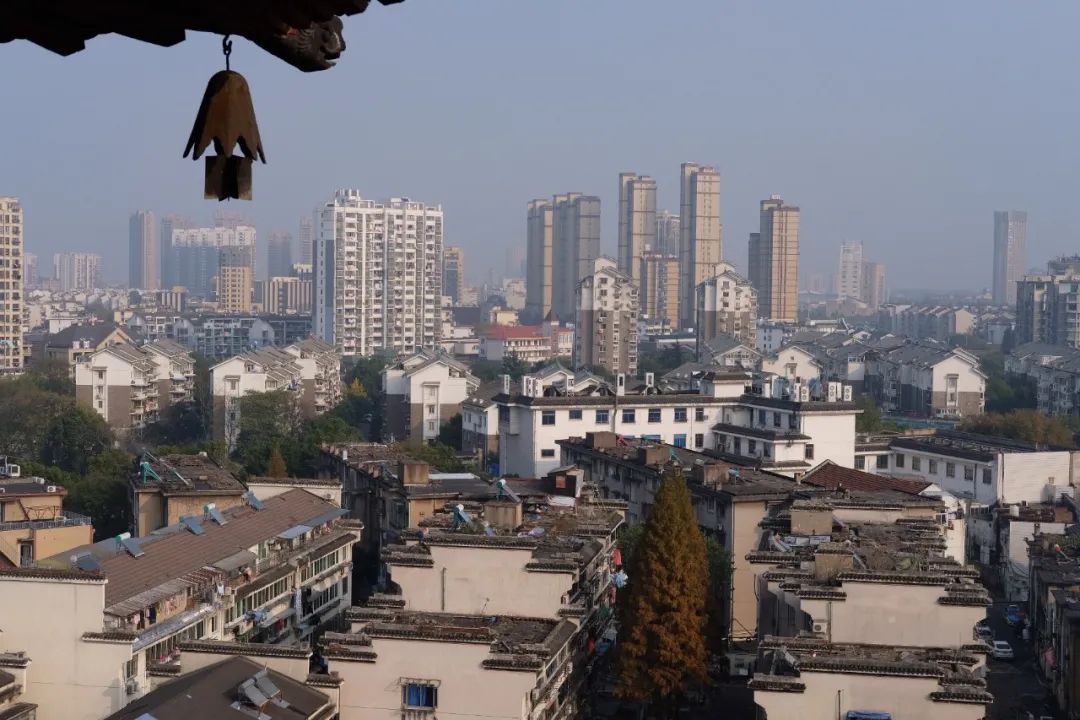
The higher I climb, the more I suspect that the tower is shaking due to the wind...
Su Shi climbed to Feiying Tower and wrote:
"Climb to the highest tower in a hurry, and your horizons will be vast."
Can this old man climb thirty floors? deceive
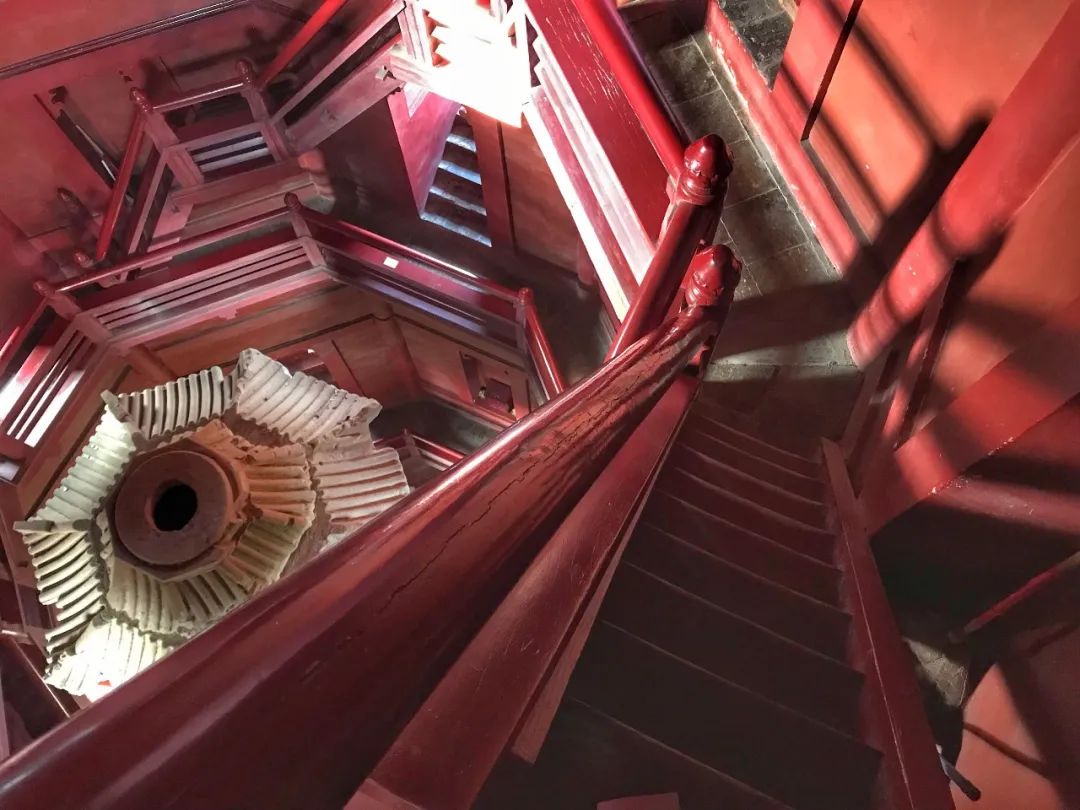
Some steps are only as narrow as your heels
Use your hands and feet when going down
It's better to make a mechanism and just slide down the slide.
While climbing up and down, I remembered watching Journey to the West when I was a kid. There was an episode where Sun Wukong held a lamp and swept the tower for Monk Tang. I was very impressed. I even cried while watching it. I was probably shocked that Sun Wukong was so gentle.
I was already sweating when I got back to the ground. The aunt in the ticket booth looked at me with a smile. I patted the dust on my body and said to her, ah, it’s so fun up there! Auntie said, right, isn’t it thrilling?
I said, yes, yes, it's so worth it. Auntie, you don't have to clean it today. I just mopped the stairs for you. The aunt laughed, and then she said a summary: Only my tower among the three wonders of Huzhou is true, and the other two are fake. Killing me.

Iron Buddha Temple

Iron Buddha Temple exterior entrance
After coming out of Feiying Park, we walked to Fumiao. This temple within a temple really didn’t have much to see. There was one Iron Buddha Temple left that I wanted to visit, but the temple closed at four o’clock. I drove all the way from Fumiao. Guanyin must sense my sincerity.
The temple was built in the Southern Dynasties. It is said that Master Jianzhen made three unsuccessful trips to Japan eastward. He came to Huzhou from Asoka Temple in Mingzhou (now Ningbo) via Yuezhou (now Shaoxing) and Yuhang to lecture and teach Buddhist scriptures. It is said that the temple was often damaged by fires and the Buddha statues were often repaired and destroyed. He proposed to cast an iron Guanyin. It was not until the third year of Tiansheng's reign (1025) in the Northern Song Dynasty that the Iron Avalokitesvara statue was cast. During the Ming Dynasty, three large iron Buddhas, Sakyamuni, Manjusri, and Samantabhadra, were cast. The temple was prosperous. However, during the Qing Dynasty and subsequent wars, it declined again. It has experienced ups and downs for more than a thousand years. The most amazing thing is that during the WG turmoil, "Tiefo Temple became a refractory factory for the Huzhou Town Vegetable Brigade, the front hall became a brick-making workshop, and the back hall became a crushing workshop. Tieguanyin and the three giant Buddhas were first thrown into the wild, and then They were smashed with hammers, sawed with iron saws, and carried to the furnace for smelting. As a result, the three Buddha statues were destroyed. Tie Guanyin was cast because 13 rare metal elements such as titanium, manganese, chromium, silicon, copper, and silver were added to the molten iron. , aluminum, etc., so it won’t be broken when smashed, and it won’t be melted when refined, only one finger will be lost.”
The viewing of Amitabha Buddha and the iron Avalokitesvara statue is completed.

Zhuangyuan Building Xiaoxi Street
From Tiefo Temple, walk a few hundred meters south along Laodong Road to the Zhuangyuan Street Historic District. Xiaoxi Street is parallel to Zhuangyuan Street. Zhuangyuan Street is along the river and has a commercial street atmosphere, while Xiaoxi Street is an alleyway, creating a cultural and creative area for Internet celebrities. In fact, these two places are just to the west of Yishang Street, separated by a huge parking lot.
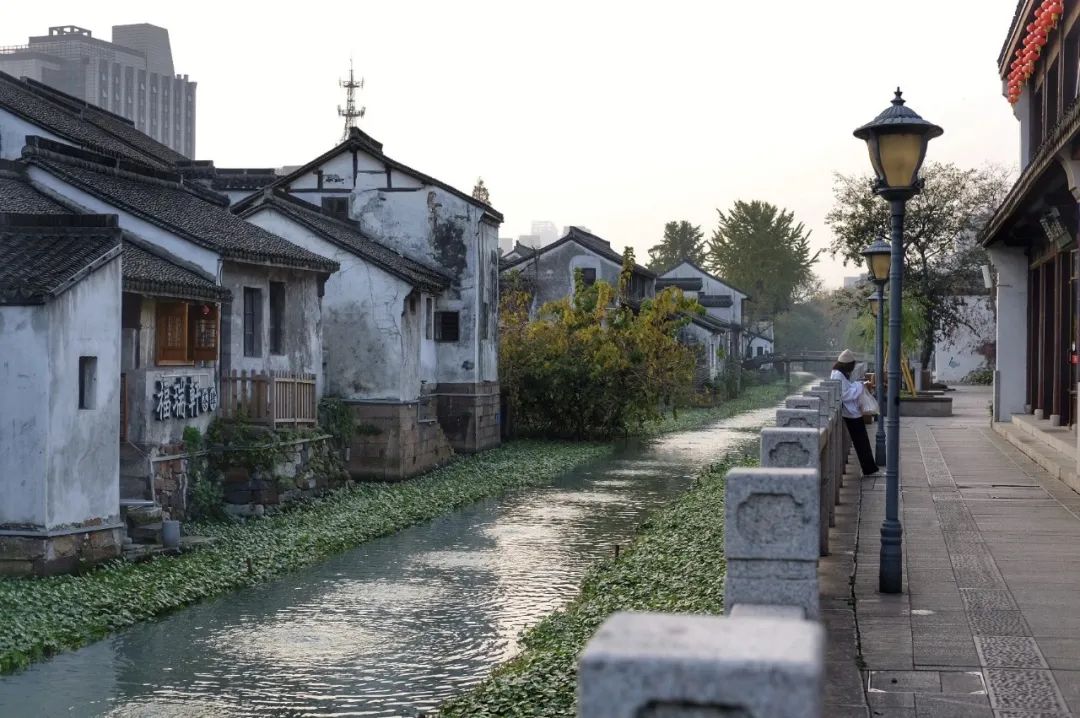

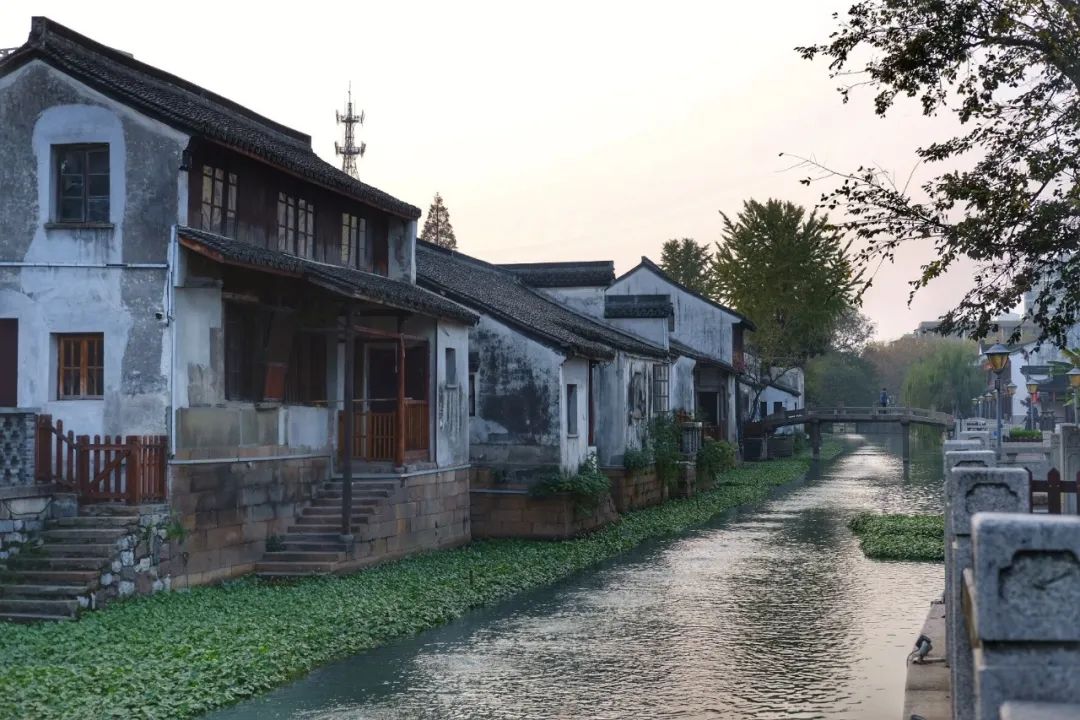

There are bridges everywhere in Huzhou City
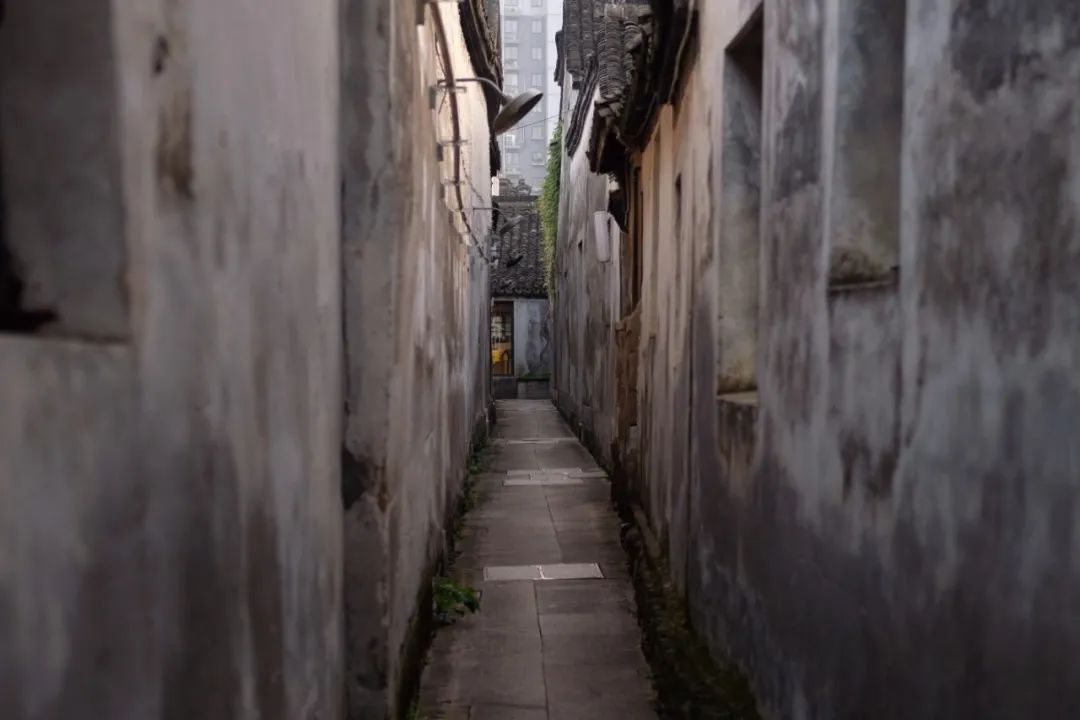

In this way, the day's rampage in Huzhou City is over. If it hadn't been for Monday and several places were closed, I might not have been able to finish it in one day. From Feiying Tower, you can also go to Xiangwang Park, Lu Yu Qingtang Farewell Park where Lu Yu wrote "The Book of Tea" I also omitted the industry. I later made a special trip to the Huzhou Museum, which is about a ten-minute drive away. Unfortunately, only the Furniture Hall was open. It is said that sword castings from the Yue Dynasty are on display there, and there should be cultural relics preserved during the renovation of other historic sites.
What I regret most is that I missed Mo Miaoting. Mo Miao Pavilion was moved to the east of Feiying Park. At that time, I entered from the north gate and walked along the west to Feiying Tower. I did not go to the east of the park. Although today's pavilion may have been built, I don't know what the inscriptions inside are. It was not the inscription that Su Shi had seen at that time.
In the second year after Su Shi's good friend Sun Xin became the magistrate of Huzhou, he built a Mo Miao Pavilion. He collected ancient poems, articles and carved stones from Huzhou since the Eastern Han Dynasty to enrich the pavilion. In the fifth year of Xining (1072), Su Shi went to Hangzhou to serve as the general magistrate. , passing by Huzhou, Sun Xin asked Su Shi to visit Mo Miao Pavilion and take notes.
The first paragraph summarizes Huzhou with the four words "mountains and rivers are clear and far away". In the second paragraph, Su Shi farts several rainbows to Sun Xin. But the most exciting one is the last third paragraph:
"It may be said that everything will perish, and those who rely on their appearance to be solid will not last long. Although metal and stone are strong, they will gradually deteriorate. As for the achievements and articles, they have been handed down from generation to generation for a long time, and now they are here. Entrusting this to others, those who have survived for a long time have resorted to quick destruction. This is the confusion of the past, and Mr. Xin kept it in the big house with deep eaves. It is assumed that this is because he does not know his fate. I think that those who know destiny must do their best, and then manage it without regrets. Everything must be prosperous, just like people must die, and countries must prosper and perish. However, when it comes to cultivating one’s health, a gentleman should do everything that can help him survive and save his life. In governing a country, he should do everything that can help him survive and save his life. This is called knowing his destiny. "
I read this in the hotel at night, and I felt so sad and angry. Standing in front of the window, I saw a full moon on the lake, and the purple mist lingering in the sky and the earth, stretching as far as the eye can see. The moon, fishing boats, clouds and wind are all passers-by in heaven and earth.

Someone said to me that everything will perish, even gold and stone will decay. I recorded everything I saw and thought along the way in great detail. Wasn’t that entrusting the fleeting nothingness to words that would be even more unsustainable? Those who know their destiny, do their best, then feel at ease and have no regrets. Things may succeed or fail. For example, people are born and die, emotions are born and destroyed, and countries rise and fall. Even though we know this rule, even though there is little hope, even though life is short, people will work hard until there is really nothing they can do before giving up. This is called knowing destiny.
You can also cast these 6,000 words together with 13 rare metal elements such as titanium, manganese, chromium, silicon, copper, silver, aluminum, etc. It will not be broken by smashing, and it will not be melted by refining... 😂😂😂
